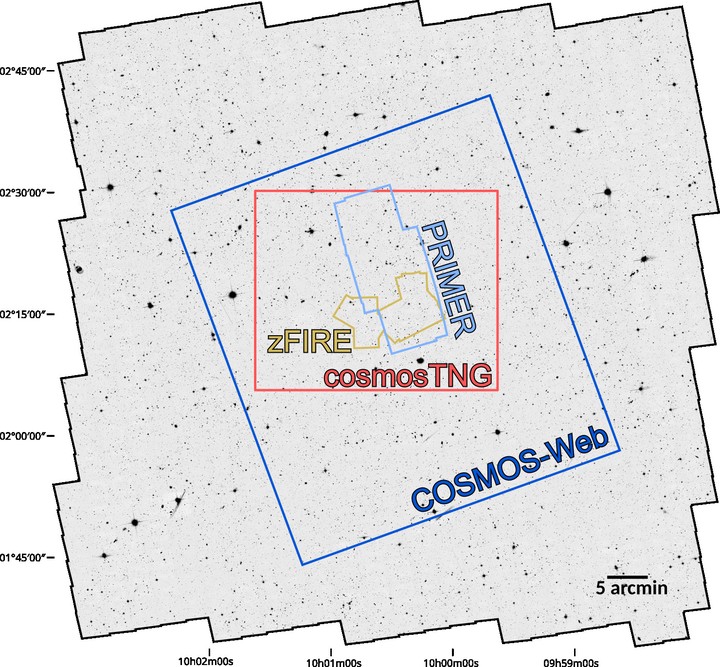Introducing cosmosTNG: simulating galaxy formation with constrained realizations of the COSMOS field

Abstract
We introduce the new cosmological simulation project cosmosTNG, a first-of-its-kind suite of constrained galaxy formation simulations for the universe at Cosmic Noon (z∼2). cosmosTNG simulates a 0.2 deg2 patch of the COSMOS field at z≃2.0−2.2 using an initial density field inferred from galaxy redshift surveys and the CLAMATO Lyman-alpha forest tomography survey, reconstructed by the TARDIS algorithm. We evolve eight different realizations of this volume to capture small-scale variations. All runs use the IllustrisTNG galaxy formation model with a baryonic mass resolution of 106 M⊙, equal to TNG100-1. In this initial study, we demonstrate qualitative agreement between the evolved large-scale structure and the spatial distribution of observed galaxy populations in COSMOS, emphasizing the zFIRE protocluster region. We then compare the statistical properties and scaling relations of the galaxy population, covering stellar, gaseous, and supermassive black hole (SMBH) components, between cosmosTNG, observations in COSMOS, and z∼2 observational data in general. We find that galaxy quenching and environmental effects in COSMOS are modulated by its specific large-scale structure, particularly the collapsing protoclusters in the region. With respect to a random region of the universe, the abundance of high-mass galaxies is larger, and the quenched fraction of galaxies is significant lower at fixed mass. This suggests an accelerated growth of stellar mass, as reflected in a higher cosmic star formation rate density, due to the unique assembly histories of galaxies in the simulated COSMOS subvolume. The cosmosTNG suite will be a valuable tool for studying galaxy formation at cosmic noon, particularly when interpreting extragalactic observations with HST, JWST, and other large multi-wavelength survey programs of the COSMOS field.